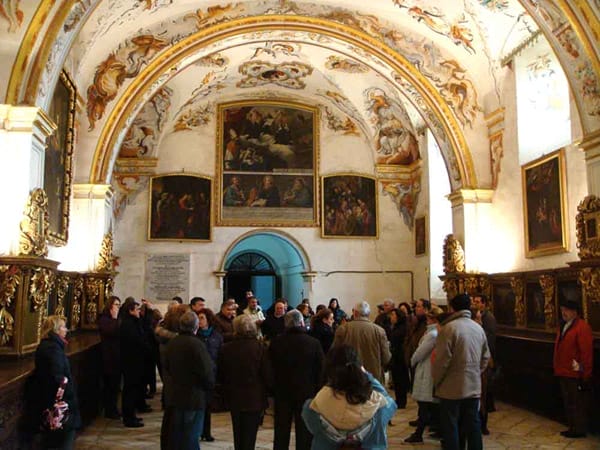The information of the Europa Press agency highlights that the “Emilianensis: Aula de Patrimonio” will allow one to observe and understand the values of a historical edifice, in order to apply it later to the valuation of its most approximate patrimony, underlining the scientific, technical and economic endeavor that requires conservation, and will foster a sense of responsibility over it.
In the Aula de Patrimonio the participants will be able to understand the lifestyle, art, history and surrounding of a place declared as World Heritage Site. It will provide professors necessary resources to enrich learning outside and within the hall. It will offer tourist guides resources to improve and enrich what they offer in San Millán de la Cogolla, and it will share practical information to university students of Tourism and Masters in Patrimony, History, Culture and Territory.
The project ‘Emilianensis’ presents different kinds of activities designed for all those interested in the cultural and natural patrimony of San Millán de la Cogolla. For this purpose, educational trips organized by schools, visits by groups and families can be done. All the relevant information is to be found on the website: www.emilianensis.com.
Workshops
“The life of San Millán. From the written word to the painted and sculpted images.” This is the thematic line of one of the workshops that goes through the life of San Millán. For this purpose, a tour of the surroundings of the monasteries of Suso and Yuso, and of places where the Saint stayed, is done. One can discover picturesque images and sculptures that narrate his life, and one can work in a team to make a retable.
“Lime, stone, wood, water. Materials used to build a monastery.” In this workshop, one discovers how a monastery was built: the crafts used, scientific knowledge applied in the construction, materials and techniques used, the influence of the natural environment on the features of the edifice. The environment of Yuso and Suso is explored in order to test the relationship between the ideals of monastic life and the organization of space and the exploitation of natural resources.
On Saturday mornings, guided tours will be organized up to the Cueva del Santo to know the surroundings where San Millán lived. One can observe the flora, fauna, waterways and mineral resources, with which the monasteries were supplied for centuries.
“The Architecture workshop and the demonstration of crafts related to the construction.” In this workshop, one can experiment with maquettes in order to understand the basic elements in the construction of the monastery of Yuso: “ashlar stone, wall, arch, dome,” and to see how one of the artisans works, who today maintain the existing crafts of construction in this valley.
“Book workshop.” On Sunday mornings, one can work in teams to illustrate with actual images the texts of the life of San Millán written by Gonzalo de Berceo.
“The fortunes and misfortunes of a young pastor who ended up becoming a saint.” This is a dramatized tour in which the narrator recounts the adventures and misadventures of San Millán, the young pastor and then a hermit. One can discover how his life transformed this place into one of the most important conjoint monasteries of Europe, considered today as a World Heritage Site.
Financing
The project has been made possible through the help of the Programa de Desarrollo Rural de La Rioja, and a grant has been received from La Rioja Occidental. Likewise, it also has the sponsorship of the Fundación Caja Madrid and the collaboration of the Order of Augustinian Recollects.


